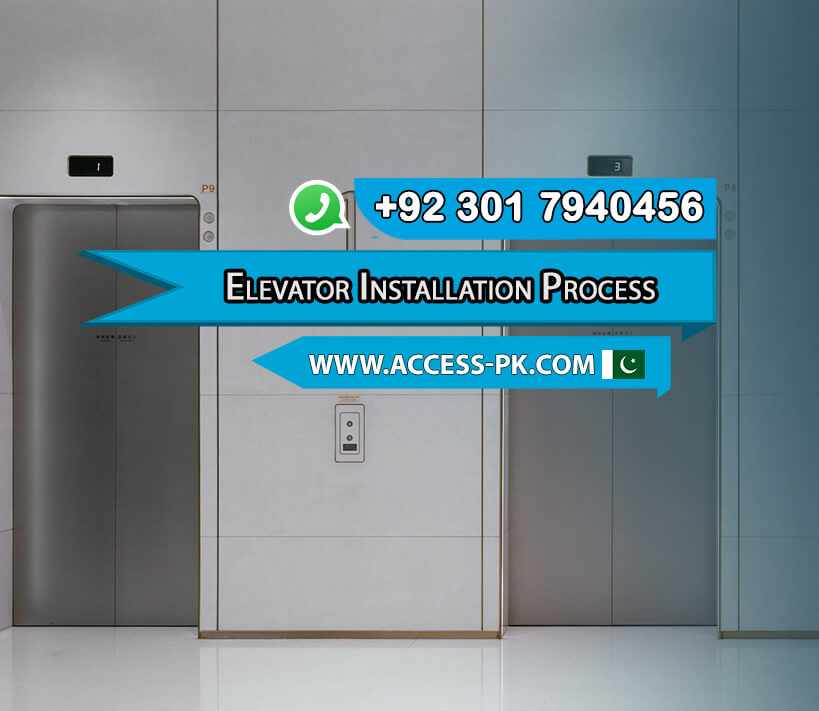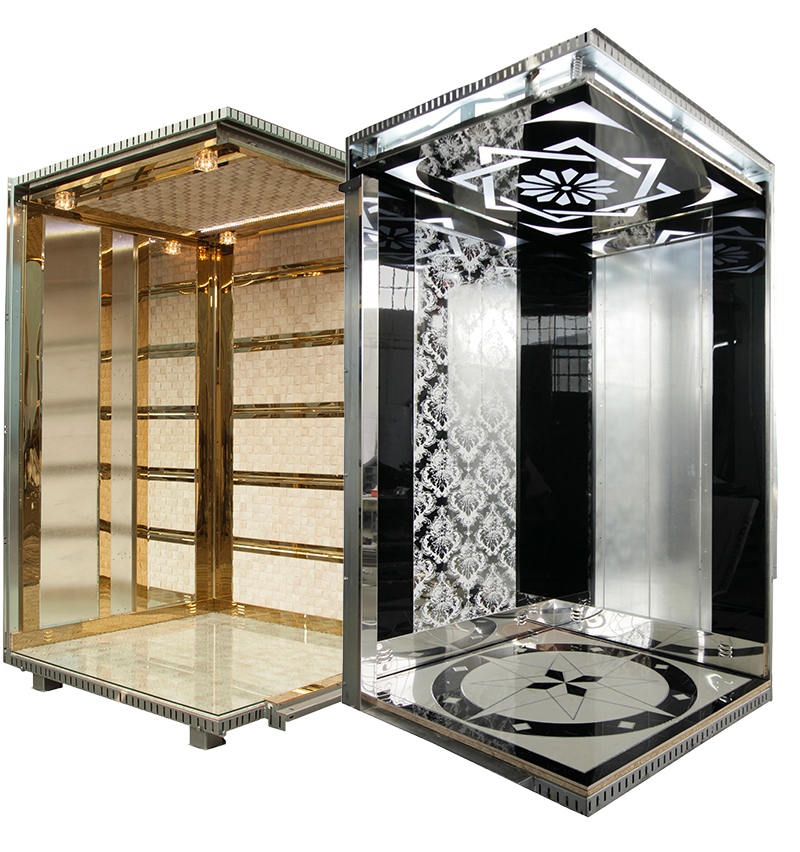The Elevator Installation Process begins with comprehensive planning. Access Technologies, owned by Imran Rafi, plays a vital role in offering tailored solutions for buildings. First, professionals assess your building’s specifications and design the most suitable elevator. Then, they finalize the project timeline to ensure efficiency. This stage ensures a smooth start, reducing delays. Consequently, it paves the way for a successful installation. From understanding the building’s needs to selecting the right elevator system, each step prepares the ground for seamless execution.
Once the planning phase concludes, the next step in the Elevator Installation Process involves preparing the site. This stage requires careful coordination between contractors and engineers. They ensure that the space meets all necessary specifications before construction begins. Afterward, the team prepares the elevator shaft, ensuring it aligns with safety protocols. Meanwhile, the installation of electrical components and support structures is completed. Each task follows a precise sequence, which ensures smooth progress throughout the process. As a result, the foundation for installation is set, minimizing potential setbacks.
In the final stages of the Elevator Installation Process, inspections and safety protocols become paramount. Engineers conduct extensive testing to confirm that the elevator functions correctly. They also review compliance with building codes and safety regulations. Additionally, the performance is optimized to guarantee smooth operation. By the end of this process, the elevator is ready for use. Thus, professional Elevator services ensure not only the installation but also the ongoing safety and performance of the system.
Get Free QuotesComprehensive Planning and Design: Laying the Groundwork for Elevator Installation

Effective elevator installation begins with comprehensive planning and design, ensuring a smooth and successful project. At this stage, companies like Access Technologies, owned by Imran Rafi, play a critical role in guiding the process. The elevator installation process involves intricate planning, including assessing the building’s unique needs and creating a tailored design. The goal is to ensure efficiency, safety, and compliance with regulations. During the design phase, every detail, from shaft dimensions to load-bearing capacity, is thoroughly analyzed. This detailed groundwork ensures that the final structure accommodates the elevator’s specifications perfectly. Moreover, strategic planning at this stage enables accurate budget estimations and timelines, crucial for seamless project execution.
Assessing Building Requirements
Before initiating the elevator installation process, the first step is assessing the building’s specific requirements. This assessment begins by evaluating factors like the building’s height, structure, and the number of floors it serves. For an effective installation, these parameters must align with the elevator’s capacity and operational needs. Architects and engineers collaborate to ensure the building can accommodate the required shaft space, electrical systems, and emergency features. Moreover, this stage involves understanding local zoning laws and safety regulations that impact installation. Assessing these elements ensures a compliant and functional elevator installation, setting the foundation for a successful project. Partnering with elevator services providers like Access Technologies ensures that every building’s unique needs are met with precision and attention to detail.
Selecting the Elevator Type
Choosing the right elevator is a vital part of the elevator installation process. The decision is based on the building’s specific requirements, including height, foot traffic, and the overall usage patterns. For example, high-rise buildings may benefit from gearless traction elevators, which provide speed and efficiency. On the other hand, smaller buildings might opt for hydraulic elevators, which are more cost-effective and suited for lower-rise structures. Additionally, factors like energy efficiency, aesthetics, and long-term maintenance costs play a crucial role in this selection process. Access Technologies provides various elevator services, helping clients select the most suitable elevator and streamlining the installation process to meet their exact needs.
Finalizing Project Timelines
Finalizing the project timelines is an essential step in ensuring the success of the elevator installation process. This phase involves mapping out key milestones, from initial design to final inspection. By setting realistic deadlines, the project team can manage each stage efficiently while minimizing disruptions. Timelines should factor in any potential delays, such as weather conditions or supply chain disruptions, and should align with the client’s expectations. Regular updates and meetings between stakeholders help maintain progress and ensure that the installation stays on track. With Access Technologies’ elevator services, clients benefit from a well-structured timeline, leading to timely project completion without sacrificing quality.
Get Free QuotesSite Preparation: Ensuring Your Building Is Ready for Elevator Installation

Before any elevator system is installed, thorough site preparation is crucial to ensure the building is ready for the Elevator Installation Process. This stage begins with a detailed site survey, where engineers assess the structure’s foundation and layout. They examine the available space, ensuring it meets the specifications needed for the elevator shaft, mechanical equipment, and wiring. Additionally, they consider the building’s electrical system, ventilation, and any potential structural reinforcements that might be necessary to support the elevator. At this point, Elevator services include clearing the designated areas and making modifications to accommodate the installation, laying the groundwork for a seamless process.
| Elevator Type | Cost |
|---|---|
| Stair lifts | 810000 to 1770000/Pkr |
| Home Lifts | 1200000 to 2000000/Pkr |
| DIY Food Elevator | 2230000 to 3350000/Pkr |
| Two-Story Home Lift | 7020000 to 8420000/Pkr |
| Hospital Bed Elevators | 4150000 to 8300000/Pkr |
| Panoramic Elevator | 3180000 to 3870000/Pkr |
Proper site preparation also involves coordinating with building codes and safety regulations. The project team works closely with local authorities to secure the necessary permits and approvals. This phase includes ensuring that the construction site adheres to safety protocols, minimizing risks during the Elevator Installation Process. Site preparation also covers logistical planning, such as organizing the delivery of materials and equipment to the site, so there are no delays once construction begins. By focusing on thorough site preparation, Elevator services ensure a smooth installation that aligns with all legal and technical requirements, paving the way for the next stages of the project.
Get Free QuotesInstalling and Setting Up the Elevator System: From Shaft Construction to Mechanical Integration

Once the site is prepared, the Elevator Installation Process progresses to the installation and setup of the elevator system. This phase starts with the construction of the elevator shaft, a crucial part of the structure that houses the elevator cab and counterweights. Depending on the building’s design, the shaft may be constructed using steel, concrete, or a combination of materials. Once the shaft is complete, mechanical integration begins. This includes installing the hoistway equipment, such as guide rails and buffers, and setting up the motor and pulley systems that allow the elevator to operate. Throughout this process, Elevator services ensure precision, ensuring the system is securely in place and fully functional.
Next comes the integration of the electrical and control systems, which are vital for the elevator’s operation. Electricians install the necessary wiring, while technicians configure the elevator’s control panel and safety features, such as emergency stop systems and backup power sources. Once all components are in place, technicians conduct comprehensive testing to ensure the elevator meets safety standards and operates efficiently. This stage of the Elevator Installation Process involves a series of performance evaluations to confirm that every part of the system is working seamlessly.
Get Free QuotesFinal Inspections and Safety Protocols: Ensuring Compliance and Optimal Performance

The final inspections and safety protocols are essential steps in the Elevator Installation Process to guarantee that the system operates efficiently and adheres to all regulatory standards. During this stage, Elevator services providers, like Access Technologies owned by Imran Rafi, focus on ensuring that every aspect of the installation meets local and national safety codes. They conduct thorough inspections to check mechanical functionality, electrical systems, and emergency operations. Additionally, they review every critical component, such as brakes, doors, and communication systems, to ensure they work flawlessly. This phase also includes testing the elevator under various load conditions to verify that it performs optimally under stress. Safety protocols ensure that the elevator will function smoothly for years to come.
Conducting Safety Tests
Conducting safety tests is a critical component of the Elevator Installation Process. These tests ensure that the elevator is safe for operation under various conditions. Elevator services providers meticulously check key safety features, such as emergency brakes, door interlocks, and communication systems. Technicians perform load tests to verify that the elevator handles its maximum weight capacity without compromising functionality. They also test emergency power backup systems to confirm that the elevator remains operational during power failures. These comprehensive tests ensure the elevator meets the highest safety standards before entering service, preventing any potential hazards during operation.
Reviewing Code Compliance
Reviewing code compliance is an essential step in the Elevator Installation Process. This phase ensures that the elevator adheres to all relevant local, national, and international safety standards. Elevator services providers carefully review building codes, fire safety regulations, and disability access requirements during the inspection. Specialists check everything from the spacing of the elevator doors to the operation of fire alarm systems to ensure compliance. Any violations or discrepancies found during the review are corrected before the elevator is deemed safe for use. Ensuring code compliance is vital to protecting both the building occupants and the long-term functionality of the elevator.
Ensuring Operational Efficiency
Ensuring operational efficiency is a significant focus during the final phase of the Elevator Installation Process. Elevator services teams assess the system’s performance under normal and peak usage conditions. The goal is to guarantee smooth operation with minimal downtime or maintenance issues. Technicians evaluate the elevator’s speed, response time, and ride quality to ensure an optimal passenger experience. Routine maintenance protocols are also established to keep the elevator running at peak efficiency. By prioritizing operational efficiency, service providers not only enhance passenger satisfaction but also prolong the life of the elevator system.
Get Free Quotes



